Relationships are fundamental to our emotional well-being, and knowing how to recognize healthy vs. unhealthy relationships can have a significant impact on mental health and happiness. Whether you’re just beginning a relationship or reflecting on a long-term one, identifying the key signs of healthy and unhealthy dynamics is crucial. In this guide, we’ll explore the critical differences and offer insights to help you maintain fulfilling, supportive partnerships.
Table of Contents
- What Is a Healthy Relationship?
- What Is an Unhealthy Relationship?
- Spotting the Differences: Healthy vs. Unhealthy Relationship Dynamics
- Emotional Well-being in Relationships
Key Takeaways
- Healthy relationships are built on trust, respect, and open communication.
- Unhealthy relationships often involve control, manipulation, and emotional abuse.
- Recognizing the differences can help you make informed decisions about your emotional well-being.
What Is a Healthy Relationship?
A healthy relationship fosters mutual respect, emotional safety, and open communication. Partners in these relationships feel supported and validated in both their emotional needs and personal growth. While no relationship is without conflict, in healthy relationships, partners handle disagreements constructively, without fear of judgment or retaliation.

Key Signs of a Healthy Relationship
- Trust and Honesty: Both partners feel secure and confident in their relationship. Lies and manipulation are absent.
- Open Communication: There is an open, honest dialogue about feelings, expectations, and problems.
- Emotional Support: Partners support each other emotionally and celebrate individual successes.
- Boundaries: Healthy boundaries allow both partners to grow independently while still nurturing the relationship.
- Mutual Respect: Both partners respect each other’s opinions, values, and personal space.
Table: Healthy Relationship Traits
| Trait | Explanation |
|---|---|
| Trust | Partners trust one another without constant suspicion. |
| Respect | Each individual’s autonomy and boundaries are respected. |
| Support | Both partners are supportive of each other’s goals and challenges. |
| Communication | Partners discuss issues openly without fear of judgment. |
In healthy relationships, partners recognize each other’s strengths and weaknesses, and conflicts are approached with empathy and understanding. Both parties feel secure in the relationship, knowing that their emotional needs will be met. This creates an environment of mutual growth, where both individuals can flourish without feeling pressured to change or compromise their values.
What Is an Unhealthy Relationship?
An unhealthy relationship is characterized by patterns of control, manipulation, and emotional or physical abuse. These toxic dynamics often leave one or both partners feeling anxious, scared, or emotionally drained. The foundation of unhealthy relationships is built on power imbalances, where one partner tries to dominate the other.

Red Flags of an Unhealthy Relationship
- Constant Criticism: One partner frequently belittles or undermines the other.
- Control and Manipulation: A partner exerts control over decisions, activities, or social interactions.
- Emotional or Physical Abuse: Emotional abuse includes gaslighting, while physical abuse may involve threats or violence.
- Jealousy and Possessiveness: Unhealthy levels of jealousy and possessiveness can lead to isolation and fear.
- Lack of Communication: Meaningful conversations are avoided, leading to resentment and misunderstandings.
Table: Unhealthy Relationship Traits
| Trait | Explanation |
|---|---|
| Criticism | One partner frequently criticizes or belittles the other. |
| Control | Manipulative tactics to control decisions and interactions. |
| Abuse | Emotional or physical harm inflicted by one partner. |
| Jealousy | Possessive behavior that limits personal freedom. |
In unhealthy relationships, the well-being of one partner is often sacrificed for the other’s control or dominance. These behaviors might manifest subtly at first but tend to escalate over time, resulting in further emotional or physical harm. If you notice any of these signs, it’s crucial to assess whether the relationship is truly serving your emotional health and safety.
Spotting the Differences: Healthy vs. Unhealthy Relationship Dynamics
Spotting the differences between healthy and unhealthy relationships can sometimes be difficult, especially when unhealthy dynamics are normalized over time. However, several critical factors can help you differentiate between the two.

Communication Styles
One of the key differences is the way partners communicate with each other. In healthy relationships, communication is respectful and constructive. Partners discuss their feelings and concerns without fear of retribution. On the other hand, in unhealthy relationships, communication is often negative, manipulative, or absent. Partners may use guilt or blame to dominate conversations or avoid discussing important issues altogether.
Conflict Resolution
Healthy relationships approach conflict as an opportunity for growth. Partners actively listen to each other’s perspectives and seek to resolve issues in a way that benefits both parties. However, in unhealthy relationships, conflicts often escalate into arguments, and one partner may try to “win” rather than resolve the issue. This can result in ongoing resentment and a lack of closure.
Personal Boundaries
In a healthy relationship, partners respect each other’s boundaries and personal space. They allow each other the freedom to grow and pursue personal interests. However, in unhealthy relationships, boundaries are often disrespected or ignored. One partner may try to control the other’s time, activities, or social interactions, leaving the other partner feeling suffocated and isolated.
Emotional Well-being in Relationships
One of the most significant ways a relationship can affect your life is through its impact on your emotional well-being. Healthy relationships often provide a sense of stability and security, whereas unhealthy ones can drain your energy and undermine your self-worth.
The Role of Support in a Healthy Relationship
In a healthy relationship, emotional support is a cornerstone. Partners encourage each other during tough times and celebrate each other’s achievements. This sense of support not only nurtures individual well-being but also strengthens the overall bond. When a partner feels emotionally validated, it boosts their self-esteem and contributes to a more positive outlook on life.

Moreover, the security that comes from a stable relationship can act as a buffer against external stressors. Life is full of challenges, but having a reliable partner by your side can make those challenges easier to face. Mutual trust and respect help partners navigate life’s difficulties while remaining emotionally balanced.
The Detrimental Effects of Unhealthy Relationships on Mental Health
On the flip side, unhealthy relationships can wreak havoc on your mental health. Constant conflict, criticism, and emotional neglect can cause anxiety, depression, and stress. Over time, the lack of emotional support can result in feelings of loneliness and isolation, even if you’re physically with your partner.
Table: Emotional Impact of Relationships
| Type of Relationship | Impact on Mental Health |
|---|---|
| Healthy Relationship | Boosts self-esteem, reduces stress, provides emotional stability. |
| Unhealthy Relationship | Increases anxiety, leads to emotional exhaustion, lowers self-esteem. |
Many people in unhealthy relationships struggle with constant self-doubt and emotional exhaustion. The stress caused by toxic dynamics can affect every area of life, from work to personal relationships. In extreme cases, prolonged emotional abuse can lead to mental health disorders, such as anxiety or depression.
Why People Stay in Unhealthy Relationships
It’s easy to wonder why someone would remain in a relationship that negatively impacts their mental health. However, leaving an unhealthy relationship is often more complicated than it seems. There are several psychological, emotional, and practical reasons why people might choose to stay.
Fear of Being Alone
One of the most common reasons people stay in unhealthy relationships is the fear of being alone. Society often places a high value on being in a relationship, and some individuals fear the stigma of being single. Additionally, the thought of starting over can be daunting, especially after investing time and emotions into a relationship.
Emotional and Financial Dependency
Dependency, whether emotional or financial, is another significant factor. In many cases, one partner might rely on the other for emotional validation, financial security, or both. The thought of losing this support system, even if it comes with toxic behavior, can be overwhelming and prevent people from taking action.
Attachment and Emotional Investment
Attachment plays a crucial role as well. After investing emotionally in a relationship, people might find it hard to let go, believing that things might improve or that the relationship will return to its early stages. Emotional bonds, even in unhealthy dynamics, can create a sense of loyalty and attachment that’s hard to break.
Fear of Escalating Abuse
In relationships where emotional or physical abuse is present, the fear of escalation can trap someone in the relationship. Victims often fear that leaving might provoke more aggressive or violent behavior from their partner, making it even more dangerous to escape.
Taking Steps to Leave an Unhealthy Relationship
Recognizing that you’re in an unhealthy relationship is the first and most important step. The next step is deciding how to leave safely and build a healthier future. While the process is challenging, especially when emotional or physical abuse is involved, there are strategies that can help you navigate this difficult situation.
Building a Support System
Leaving a toxic relationship is easier when you have a strong support network. Friends, family, or a therapist can provide emotional support and guidance as you navigate your decision. Surrounding yourself with positive influences can give you the strength to take action.
Creating a Safety Plan
If the relationship involves emotional or physical abuse, creating a safety plan is essential. This plan might include contacting a local shelter, setting aside emergency funds, or reaching out to legal resources for protection. Having a strategy in place can help you leave safely and minimize the risks associated with ending an abusive relationship.
Seeking Professional Help
Therapy can play a crucial role in both recognizing toxic patterns and healing from the aftermath of an unhealthy relationship. Whether you seek individual counseling or join a support group, professional guidance can help you rebuild your self-worth and emotional stability.
Self-care During and After the Process
Leaving an unhealthy relationship can be emotionally draining. Prioritizing self-care is key to your recovery process. Engage in activities that boost your mood and focus on your personal growth. It’s important to reconnect with yourself and rediscover your identity outside of the relationship.
Table: Steps to Leaving an Unhealthy Relationship
| Step | Description |
|---|---|
| Build a Support Network | Gather emotional support from friends, family, or a therapist. |
| Create a Safety Plan | Plan for a safe exit, especially in cases of abuse. |
| Seek Professional Help | Consider therapy to help with emotional healing and recovery. |
| Practice Self-care | Focus on activities that promote mental and emotional well-being. |
Strengthening a Healthy Relationship
If you’re in a healthy relationship, maintaining it requires continuous effort from both partners. Just because a relationship starts off well doesn’t mean it will automatically stay that way. Strengthening your connection with your partner can ensure that your relationship remains healthy and fulfilling over the long term.
Prioritizing Communication
Communication is the bedrock of any healthy relationship. Regular check-ins, discussing each other’s needs, and addressing any conflicts early on can prevent misunderstandings. By keeping the lines of communication open, both partners can feel heard and understood.
Building Trust and Transparency
Trust isn’t something that can be built overnight. It requires consistent honesty and transparency from both partners. Whether it’s discussing future goals or daily challenges, being open about your thoughts and emotions helps establish deeper trust in the relationship.
Encouraging Each Other’s Growth
A healthy relationship encourages personal growth. Both partners should support each other’s individual pursuits, whether professional, emotional, or intellectual. Giving each other the space to grow independently makes the bond even stronger, as both individuals continue to evolve in the relationship.
FAQ
What are the signs of a healthy relationship?
A healthy relationship is built on trust, respect, and mutual support. Knowing how to recognize healthy vs. unhealthy relationships helps partners communicate openly and resolve conflicts constructively. Each person maintains their individuality and encourages each other’s personal growth.
How can I tell if my relationship is unhealthy?
Signs of an unhealthy relationship include constant criticism, manipulation, emotional or physical abuse, and controlling behaviors. You may feel anxious, trapped, or fearful, with little emotional support from your partner.
Why do people stay in unhealthy relationships?
Many people stay in unhealthy relationships due to fear of being alone, emotional or financial dependency, attachment, or fear of escalating abuse. Learning how to recognize healthy vs. unhealthy relationships can help individuals understand why they stay, sometimes believing their partner will change or that things will get better.
Can an unhealthy relationship become healthy?
Yes, but both partners must acknowledge the issues and be committed to change. Couples counseling or therapy can help address toxic patterns and rebuild the relationship. However, if abuse is present, seeking safety should be the priority.
What should I do if I’m in an unhealthy relationship?
If you are in an unhealthy relationship, it’s important to learn how to recognize healthy vs. unhealthy relationships and reach out to trusted friends, family, or a therapist for support. If there is abuse, consider creating a safety plan to leave safely and seek professional guidance.
How do healthy relationships contribute to mental well-being?
Healthy relationships provide emotional support, reduce stress, and boost self-esteem. Feeling secure and validated in your relationship helps you maintain emotional balance and cope with life’s challenges more effectively.
What role does communication play in relationships?
How to recognize healthy vs. unhealthy relationships often comes down to communication. In healthy relationships, partners engage in open and respectful discussions. In unhealthy ones, communication is frequently absent, negative, or used as a tool for manipulation.








Leave a Comment